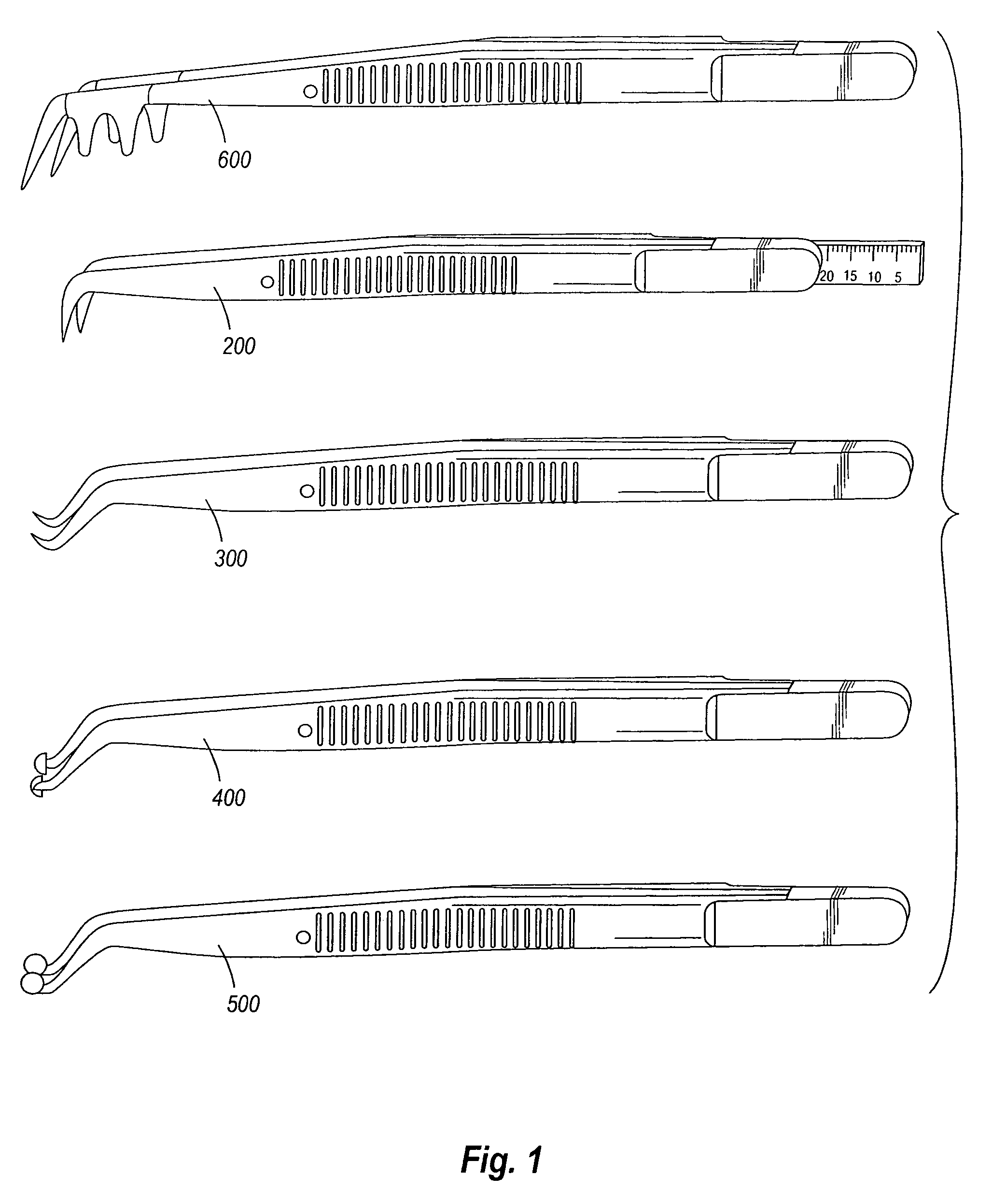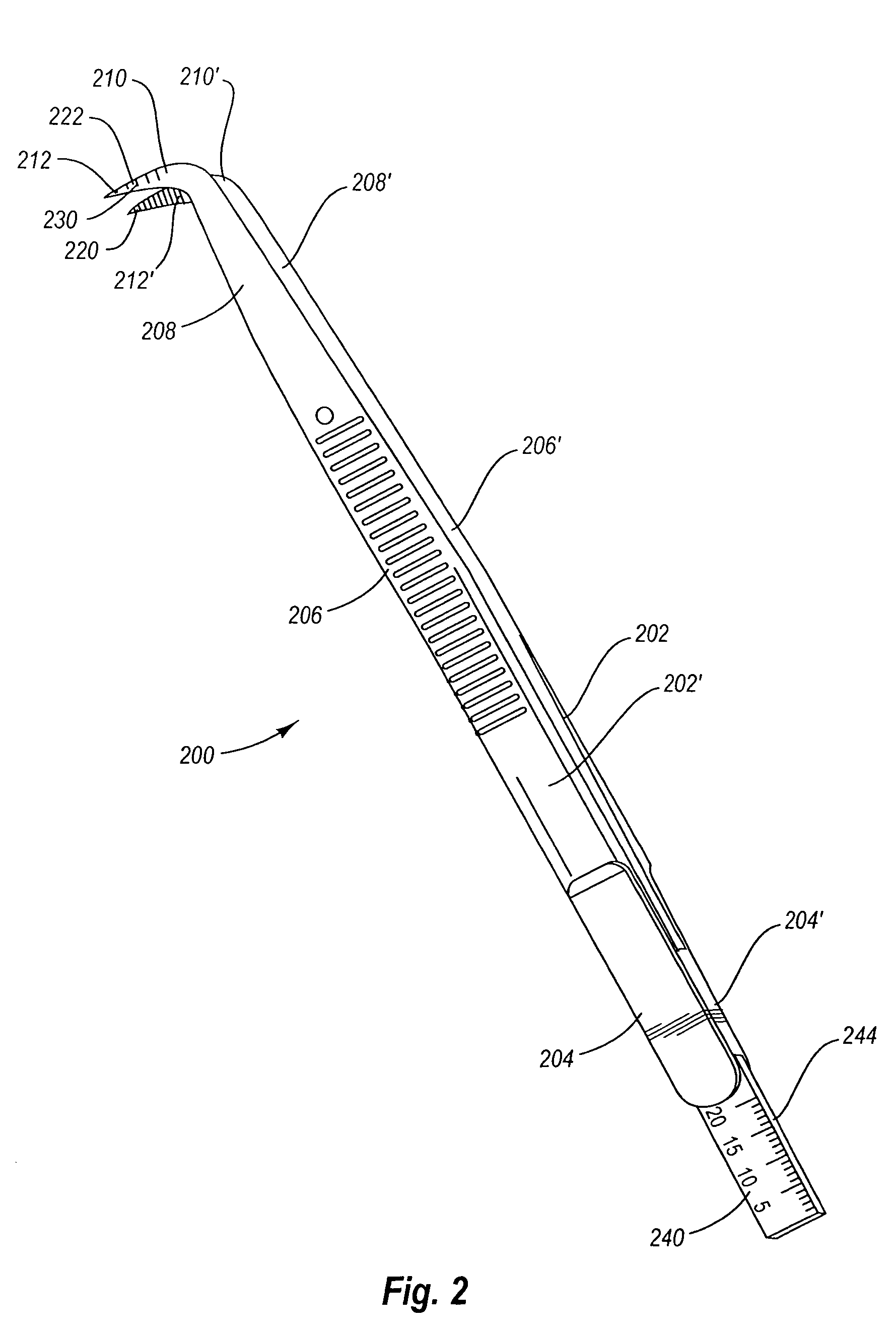Orthodontic hand tool system
a hand tool and hand tool technology, applied in the field of hand tools, can solve the problems of prior placement and alignment of brackets out of alignment, requiring subsequent resetting of formerly aligned brackets, and extending the beaks of tweezers too far from the curve portion of the tweezers, so as to achieve a favorable and stronger position, not easily misplaced or lost
- Summary
- Abstract
- Description
- Claims
- Application Information
AI Technical Summary
Benefits of technology
Problems solved by technology
Method used
Image
Examples
Embodiment Construction
[0041]While the invention is susceptible of various modifications and alternative constructions, certain illustrated embodiments thereof have been shown in the drawings and will be described below in detail. It should be understood, however, that there is no intention to limit the invention to the specific form disclosed, but, on the contrary, the invention is to cover all modifications, alternative constructions, and equivalents falling within the spirit and scope of the invention as defined in the claims.
[0042]The present invention is a series of dental or orthodontic tools designed to perform a variety of functions. The system is comprised of a variety of tools having specialized characteristics and designed for working within a patient's mouth.
[0043]Referring now to FIG. 1, a first embodiment of the tool system of the present invention is shown. In this embodiment, the outlay of the tools in the system, including a combination tools in the set, is shown. In a preferred embodimen...
PUM
 Login to View More
Login to View More Abstract
Description
Claims
Application Information
 Login to View More
Login to View More - R&D
- Intellectual Property
- Life Sciences
- Materials
- Tech Scout
- Unparalleled Data Quality
- Higher Quality Content
- 60% Fewer Hallucinations
Browse by: Latest US Patents, China's latest patents, Technical Efficacy Thesaurus, Application Domain, Technology Topic, Popular Technical Reports.
© 2025 PatSnap. All rights reserved.Legal|Privacy policy|Modern Slavery Act Transparency Statement|Sitemap|About US| Contact US: help@patsnap.com



